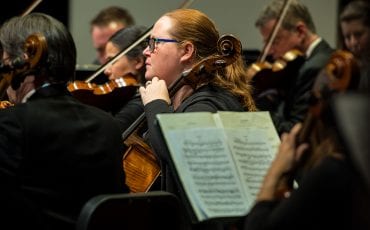Fit Kids

by Kyla Steinkraus
Table of Contents
Health experts recommend at least 60 minutes of activity a day for kids and adults, but only 25 percent of kids are hitting that target.
While those statistics are dismal, they’re completely understandable. “There are never enough hours in the day,” says Lauren Train, a Powder Springs mom of three and blogger at TalkoftheTrains.com. She describes an all too familiar list of responsibilities, from juggling work schedules, meetings, and chores to errands, homework, and massive to-do lists. When life gets hectic, physical activity is often the first thing to go.
“The challenge in today’s society is that children are more apt to play on a mobile device than to play outside,” says Sandy Slade, a former professional ball handler and kids’ fitness expert. Yet the stakes are higher than ever. According to the Centers for Disease Control and Prevention, more than one-third of children are overweight or obese.
It’s easy to think that if your child is at an ideal weight, then he is fit. But a child’s Body Mass Index, or BMI, and body fat are not adequate indicators of your child’s fitness level, says Stephanie Walsh, medical director of Child Wellness at Children’s Healthcare of Atlanta. Ask yourself whether your child tires quickly when doing moderate physical activities like hiking or biking. If so, he could use your help.
The benefits of regular physical activity include stronger muscles and bones, improved mood, improved sleep, improved academics, and decreased risk of diabetes and heart disease, Walsh says.
As parents, we know physical fitness is important for our kids. The challenge lies in making it actually happen. Check out these tips and tricks parents can use to motivate kids and squeeze family fitness into even the tightest of schedules.
Make an Appointment
Only a generation ago, parents allowed their kids to roam the neighborhood for hours at a time. Not anymore. “Most kids love to move, but more and more have limited opportunities,” says Steve Ettinger, a nationally recognized kids’ fitness speaker and youth exercise specialist. These days, parents must work to create opportunities for active play.
Schedule time for fitness on your calendar just like any other meeting or appointment. After a few weeks, that Saturday morning bike ride and Thursday night dance-off will become habits. The kids will remind you it’s time to get moving.
Make it a Family Affair
Combine family quality time and fitness for a win-win. “If parents participate, kids are more likely to engage,” Ettinger says. “Kids are naturally interested in movement and play and often model parents and older siblings.”
One easy way is to take walks together. Elizabeth Satelmejer of Dunwoody takes her three children, ages 7, 3 and 1, on a two-mile walk to the park almost every day of the week in good weather. If they complain, she motivates them by promising extra time at the playground. Give reluctant kids a destination like a park or library, or a waterfall at the end of a hike.
Visit local fitness attractions – indoor rock climbing, SkyZone, or a playground – and jump and climb right along with the kids. For years, my kids and I have played a modified game of tag called “Tiger at the Playground,” where the adult “tigers” chase the kids all over the play equipment until the adults are tuckered out.
You can also take a family fitness class together. Intown Tumbling and Yoga in Atlanta features family yoga classes. The Marcus Jewish Community Center of Atlanta in Dunwoody offers a family Fitline class, and the Circus Arts Institute welcomes parent involvement in their kids’ classes.
“Be active with your kids and be a role model,” Walsh says. “At just 4'11″, I play basketball with my three sons – with special rules just for mom – and we have a blast!” When you work out as a family, you are strengthening both bodies and bonds.
Let Them Choose
Help your kids create a fitness “wish list” to figure out what they like to do. A few times a month, they can pick from the list or draw an activity from a jar. Make sure to include several novel activities, like a visit to an indoor pool or roller skating rink, entry in a race, or spend an afternoon trying out fun games at the Atlanta Beltline’s free monthly Let’s Play! event.
Keep it Fun
Ettinger recommends finding creative ways to approach traditional exercises. “The younger the children, the easier it is – sometimes it’s as simple as adding in an animal noise or changing the name of a movement,” he says. Pretend to hop like a kangaroo while doing jump squats or leapfrog around the house.
For older children, figure out how to incorporate what your child already likes. Does she love art? Take a nature hike to collect leaves and rocks for a collage, rock painting, or leaf rubbings. He’s a bookworm? Walk or bike to the nearest library. Most kids enjoy music. Turn on some funky music and dance. Switch the lights off, give everybody flashlights, and create your own disco.








